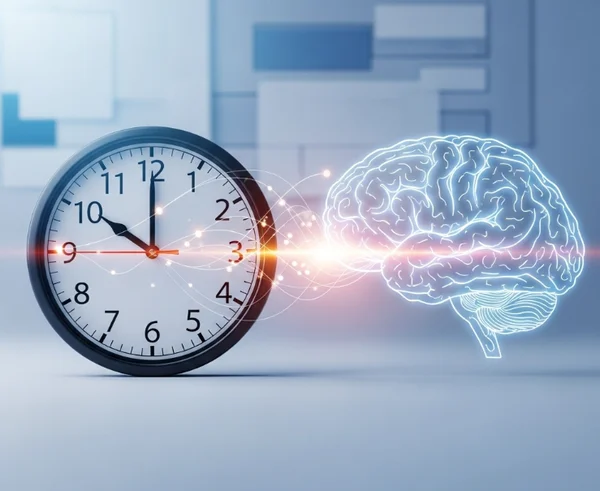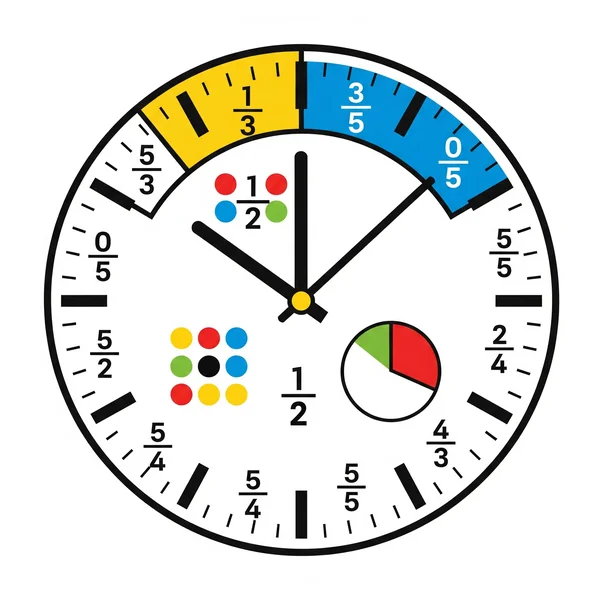Analog Clocks Obsolete? Why They Still Matter for Brain
Beyond Nostalgia: Unveiling the Enduring Cognitive Benefits of Analog Clocks for Brain Development and Learning, Especially for Dyscalculia Support
In our fast-paced, digital world, it's easy to dismiss older technologies as relics of the past. Are analog clocks obsolete in an age where time is displayed on nearly every screen we own? While digital readouts offer undeniable convenience, the traditional clock value extends far beyond mere timekeeping. This article explores why analog clocks still matter profoundly for analog clock brain development and learning, uncovering the significant cognitive benefits analog clock use can provide, and how they might even offer unique dyscalculia support. If you're interested in how cognitive skills are nurtured, you might find exploring resources like the dyscalculia test insightful.
The "Analog Clocks Are Obsolete" Myth: Why We Still Need Them
Why teach analog clocks when digital time is everywhere? While digital clocks provide instant numerical information, they don't engage our brains in the same way as their analog counterparts.
Digital Convenience vs. Analog's Unique Cognitive Engagement
Digital clocks are efficient for quick checks. However, the process of reading an analog clock – interpreting hand positions, understanding spatial relationships, and mentally calculating – offers a richer cognitive engagement. This isn't about one being "better," but about recognizing their different strengths and purposes.
The Enduring Presence of Analog Displays in Daily Life
Despite digital dominance, analog clocks still feature on watches, public spaces, and in educational settings. Familiarity with them remains a practical life skill and part of understanding time measurement comprehensively.
Unlocking Brain Power: Key Cognitive Benefits of Using Analog Clocks

What are the benefits of analog clocks for our brains? The act of reading an analog clock is a workout for several crucial cognitive functions.
Enhancing Spatial Reasoning Skills with the Clock Face
The circular face of an analog clock is a natural tool for developing spatial reasoning clock skills.
- Visualizing angles, fractions, and rotations: Children (and adults) learn to interpret angles between hands, understand fractions of an hour (quarter past, half past), and mentally track the rotational movement. These are foundational visual-spatial skills.
Developing a Deeper Understanding of Time Concepts
Analog clocks provide a visual representation of time as a continuous flow.
- Grasping time as a continuous flow, not just discrete numbers: Unlike a digital display that jumps from one minute to the next, the sweeping hands of an analog clock help to build a more intuitive time perception and understanding of duration. These are significant telling time benefits.
Boosting Estimation and Problem-Solving Abilities
The analog display encourages estimation.
- Learning to estimate remaining time or elapsed time: A quick glance can tell you approximately "a little before the hour" or "just past the half-hour," fostering skills in estimation that are useful in many real-life scenarios.
Strengthening Number Sense and Foundational Math Skills
Reading an analog clock reinforces basic math skills clock connections.
- Reinforcing counting by fives, understanding numerical relationships: The minute hand’s movement around the dial directly corresponds to counting by fives, strengthening number sense and an understanding of the base-60 system used for time.
Analog Clocks in Education: More Than Just Learning to Tell Time

The analog clock importance in education goes beyond simply teaching children how to read the time.
Why Teaching Analog Clocks is Still Crucial in Schools
Incorporating learning analog clock skills into curricula helps build a more holistic understanding of time. The educational value clock use offers lies in its ability to connect abstract concepts to a tangible, visual representation.
A Tool for Visual Learners and Abstract Concept Comprehension
For visual learners, the analog clock can make the abstract concepts of time more concrete and understandable. Seeing the hands move and relating their position to events can be more intuitive than memorizing numerical sequences.
Analog Clocks and Learning Differences: Aiding Dyscalculia Support

Can analog clocks support dyscalculia? For individuals with learning differences like dyscalculia, the analog clock can be a surprisingly helpful tool.
How the Visual-Spatial Nature of Analog Clocks Can Help with Dyscalculia
Dyscalculia often involves difficulties with number sense and spatial reasoning. The visual and spatial nature of an analog clock can provide a more accessible entry point to time concepts than purely numerical (digital) representations. Using an analog clock for dyscalculia support can leverage visual strengths.
Using Analog Clocks as a Concrete Tool for Abstract Time and Number Concepts
For those who struggle with abstract numerical ideas, an analog clock offers a concrete learning aid. The movement of the hands provides a physical representation of passing time and numerical quantities (like 5 minutes, 15 minutes), which can be easier to grasp. Understanding how different tools like analog clocks can support cognitive development is crucial, especially for individuals with learning differences. To learn more about identifying dyscalculia and its impact on learning, consider exploring the resources at dyscalculiatest.com.
Integrating Analog Clocks into a Digital World: Finding the Balance
The goal isn't to reject digital clocks but to recognize the unique traditional clock value and find ways to integrate both.
Encouraging the Use of Both Analog and Digital Time Displays
Exposing children and learners to both formats helps them develop a more flexible and comprehensive understanding of time.
Making Analog Clocks Accessible and Engaging for All Ages
From playful learning clocks for young children to elegantly designed analog watches for adults, keeping these tools present in our environment encourages their use and the associated cognitive engagement.
The Timeless Value of the Traditional Clock Face
So, are analog clocks obsolete? Far from it. While digital technology offers convenience, the analog clock remains a powerful tool for analog clock brain development, fostering crucial cognitive skills like spatial reasoning clock abilities, number sense, and a deeper understanding of time. Its value in education and as a potential aid for dyscalculia support underscores its enduring importance. The "old-fashioned" clock face still has much to teach us.
Do you think analog clocks still hold value in education and daily life? Share your thoughts!
Frequently Asked Questions about the Importance of Analog Clocks
Is it really necessary for kids to learn analog clocks anymore?
Yes, many educators and cognitive specialists believe it is. Learning to read an analog clock helps develop important cognitive skills, such as spatial reasoning and an understanding of time as a continuous quantity, which are beneficial beyond just telling time.
How does reading an analog clock help with math skills?
Reading an analog clock reinforces concepts like counting by fives, fractions (quarter past, half past), understanding angles, and the base-60 number system. These are all foundational to developing stronger math skills clock connections.
Are there studies supporting the cognitive benefits of analog clocks?
While direct "analog clock causes X benefit" studies might be specific, the cognitive functions it engages – spatial reasoning, number sense, visual processing, estimation – are well-researched areas in cognitive psychology and neuroscience, known to be vital for overall analog clock brain development and academic success.
Can using analog clocks help children with dyscalculia understand time better?
For some children with dyscalculia, the visual and spatial nature of an analog clock can make abstract time concepts more concrete and understandable compared to digital numbers alone. It can act as a visual aid to support their learning. If you are concerned about dyscalculia, understanding its signs and seeking appropriate assessments, such as the Dyscalculia Test available on our platform, is recommended.